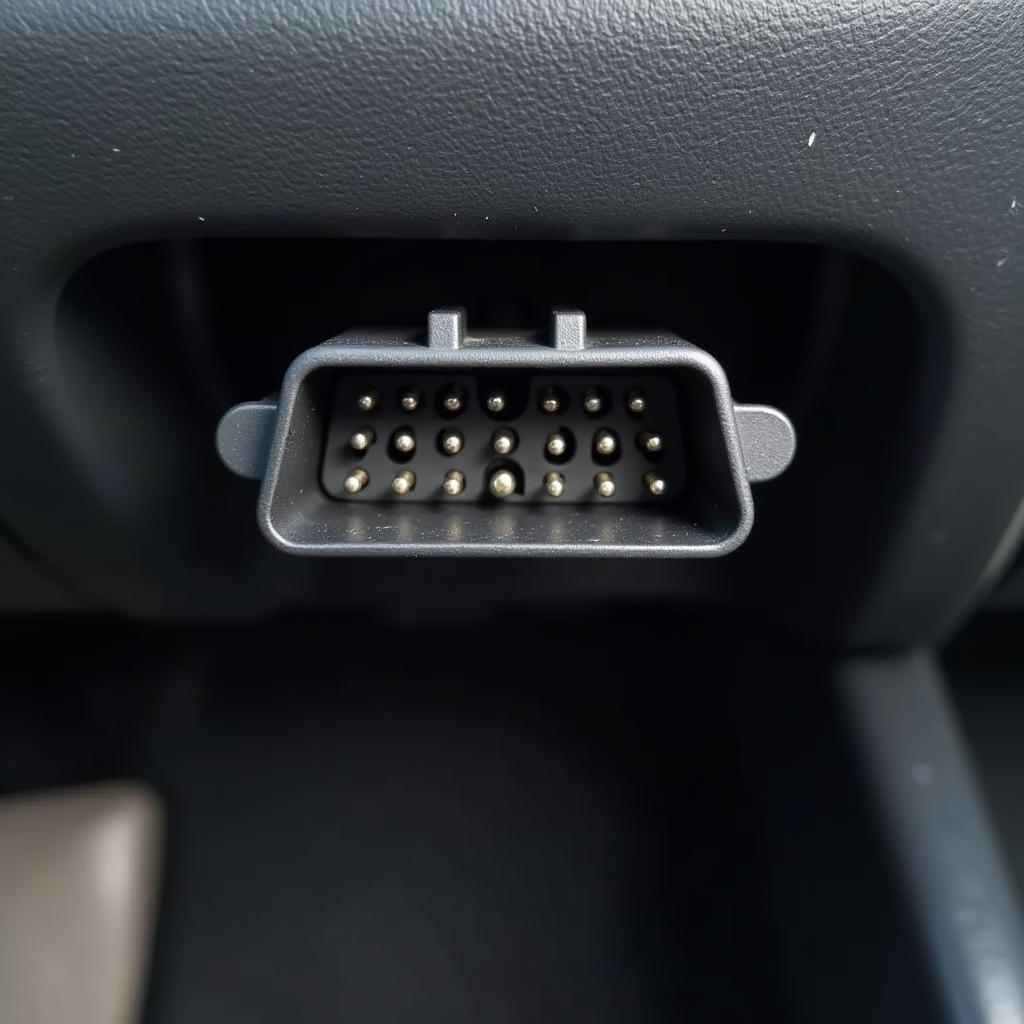The Fixd OBD2 scanner and app have become increasingly popular among car owners. One of the most common questions we get is about the Fixd OBD2 port: what is it, and how does it work? This article will cover everything you need to know about the Fixd OBD2 port, from its location and function to common issues and troubleshooting tips.
Understanding the OBD2 Port
Before we dive into the specifics of the Fixd scanner, it’s essential to understand the OBD2 port itself. OBD stands for On-Board Diagnostics, and the OBD2 port is a standardized 16-pin connector found in most vehicles manufactured after 1996. This port acts as your car’s data center, providing access to information from various systems, including the engine, transmission, emissions, and more.
The beauty of the OBD2 port is its universality. No matter what make or model you drive, the OBD2 port allows you to connect diagnostic tools, like the Fixd scanner, to retrieve valuable information about your car’s health.
How the Fixd OBD2 Scanner Utilizes the Port
The Fixd OBD2 scanner plugs directly into your car’s OBD2 port, establishing a connection between your vehicle and the Fixd app on your smartphone. This connection allows the Fixd scanner to read the diagnostic trouble codes (DTCs) stored in your car’s computer.
Think of DTCs as your car’s way of telling you there’s a problem. Instead of flashing cryptic warning lights, your car generates specific codes that correspond to different issues. The Fixd scanner acts as a translator, deciphering these codes and presenting them in a user-friendly format on your smartphone.
What Sets Fixd Apart?
While many OBD2 scanners are on the market, Fixd stands out due to its intuitive app and user-friendly features. Here are just a few benefits of choosing Fixd:
- Clear, Concise Explanations: Fixd doesn’t just give you a code; it explains what that code means in plain English. You’ll get a clear understanding of the problem, its potential severity, and common symptoms.
- Maintenance Reminders: Never miss an oil change or another crucial maintenance task again. Fixd tracks your vehicle’s mileage and sends timely reminders to keep your car running smoothly.
- Mechanic Lookup: Need a trusted mechanic? Fixd can help you find reputable mechanics in your area, making the repair process less stressful.
- Track Your Car’s Health: Fixd allows you to monitor your car’s overall health over time, helping you identify potential issues before they become major problems.
Troubleshooting Common Fixd OBD2 Port Issues
While the Fixd OBD2 scanner is designed for ease of use, you might encounter occasional issues with the connection or data retrieval. Here are some troubleshooting steps for common problems:
Problem: Fixd App Can’t Find the Scanner
- Solution 1: Ensure your phone’s Bluetooth is enabled and that the Fixd scanner is properly plugged into the OBD2 port.
- Solution 2: Try restarting both your smartphone and your car. This can often resolve minor communication glitches.
Problem: Fixd Scanner Won’t Connect to the App
- Solution 1: Check if the Fixd app needs an update. Outdated versions might have compatibility issues.
- Solution 2: Unpair the Fixd scanner from your phone’s Bluetooth settings and then re-pair it.
Problem: Fixd Scanner Isn’t Reading Codes
- Solution 1: Ensure your car’s ignition is turned to the “On” position (you don’t need to start the engine).
- Solution 2: If your vehicle is older, it might not be fully OBD2 compliant. Check your owner’s manual or contact Fixd’s customer support for assistance.
Fixd OBD2 Port: Empowering Car Owners
The Fixd OBD2 scanner, combined with the powerful Fixd app, provides car owners with an invaluable tool for understanding and managing their vehicles’ health. By understanding how the Fixd OBD2 port connection works and learning some basic troubleshooting tips, you can maximize the benefits of this innovative device and enjoy greater peace of mind on the road.
For those interested in specific OBD2 scanner models, you can find more information on our website:
Frequently Asked Questions about Fixd OBD2 Port
1. Is the Fixd OBD2 scanner compatible with all cars?
Fixd is compatible with most gasoline-powered vehicles manufactured after 1996 and diesel vehicles made after 2008 sold in the United States. For vehicles manufactured outside the US, the model years may vary. It’s always best to check Fixd’s website or your car’s manual for compatibility information.
2. Can I leave the Fixd scanner plugged in all the time?
Yes, you can leave the Fixd scanner plugged in without draining your car battery. It has a low-power mode that activates when the engine is off.
3. Does Fixd require a subscription?
The Fixd app offers both free and premium subscription options. The free version provides basic code reading and some features, while the premium subscription unlocks additional features like maintenance reminders, mechanic lookup, and more.
4. Can Fixd clear check engine lights?
Yes, Fixd can clear check engine lights once you’ve addressed the underlying issue. However, it’s important to note that clearing the light without fixing the problem is not a solution and could lead to further damage.
5. How often should I use the Fixd OBD2 scanner?
It’s a good practice to scan your car at least once a month, even if you don’t notice any issues. This proactive approach can help you catch potential problems early on.
Need More Help?
For further assistance regarding OBD2 diagnostics, you can also read:
If you require immediate support or have specific questions, please don’t hesitate to contact our 24/7 customer service team via WhatsApp at +1(641)206-8880 or email us at [email protected]. Our experts are always ready to assist you!


